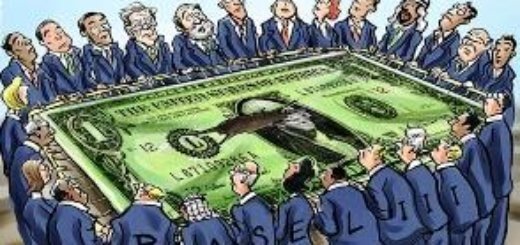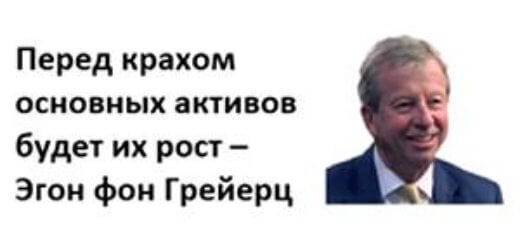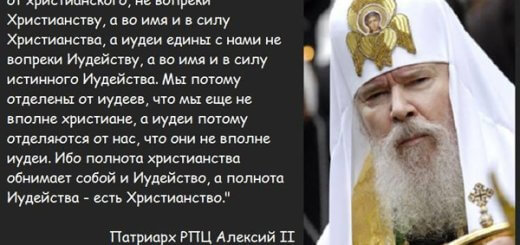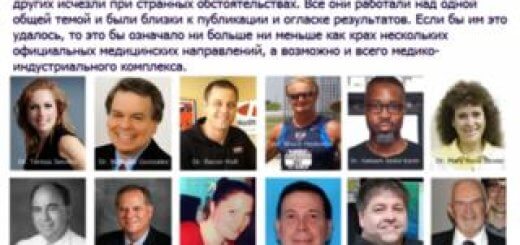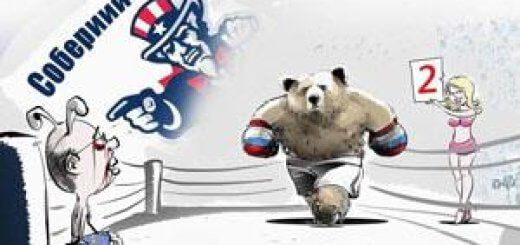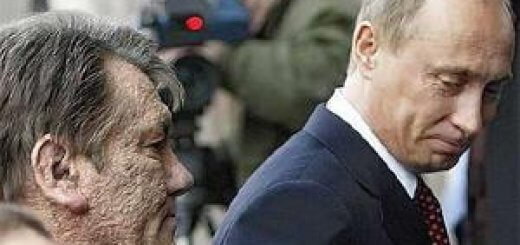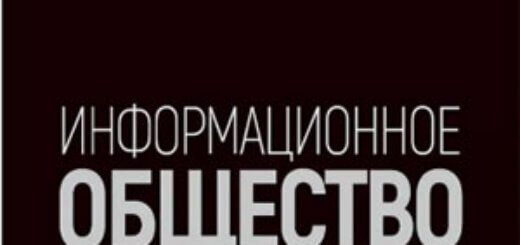
After the Second world war, Europe began an active secularization of the restructuring of public consciousness, which took place in the conditions of approval of the new economic ideology, designed to justify the formation of a society of “mass consumption” and “General welfare”.
His support was to be a prosperous “middle class” and a new type of citizen – a carrier of purely secular morality, not burdened by restrictive Christian norms and principles. In these circumstances, in order to maintain its influence, the Western Church has taken the path of adaptation to the new liberal standards, adapting to the requirements of the era. This was most characteristic of Protestant theology, which had so deeply imbibed a liberal understanding of human rights and freedoms that it became perfectly safe for secular culture, completely fitting into the ideological pluralism it advocated. Catholicism could not resist the pressure of modernism, but its path was more difficult.
In the first postwar years, in the conditions of the acute period of the “cold war”, the Catholic Church was designed to ensure the cohesion of Western society, and Pius XII, who stood at the head of it, did not allow any reformist deviations, adhering to strictly conservative views and rigidly integrist line of behavior. But after his death and the coming to power of John XXIII (1958-1963) in Catholicism begins a period of profound changes, the most serious since the Council of Trent (1545-1563). They resulted in the development of the “aggiornamento,” which was understood as openness to new ideas the changed the world, “modernizing” the Church and bringing it into line with the spirit of the time. The idea of the papacy on earth centralization of the Church, as the doctrine of the infallibility of the Pope and his supremacy over all the Christian world, in no way been questioned, but on the contrary, had strengthened the authority of the Vatican as a political force in the context of liberalization exercises.
The modernist turn of the Church was realized at the second Vatican Council, which became a turning point in the history of Catholicism. Opened in October 1962, the Cathedral has completed its work in December 1965, having 16 papers, the most important of which was the dogmatic Constitution “On the Church, On religious freedom, On Liturgy and On ecumenism, On the Church in the modern world”, highlighting the teaching focus of Christian ecumenism. However, these Renovationist decisions and the practice that followed had the most serious consequences for the Church.
Their main result was the establishment of religious pluralism and tolerance, which led to the fact that the Catholic teaching began to acquire an increasingly blurred character, and among some Catholics religious indifferentism began to spread. Many in the Church leadership feared the situation would spiral out of control. Cardinal Joseph Ratzinger (the future Pope Benedict XVI), who was a theological consultant at the Council, wrote in this regard: “the results Brought by the Council, as we can judge today, cruelly disappointed the expectations of all… The popes and fathers-delegates of the Council hoped to achieve a new Catholic unity, but instead conflicts began, passing, in the words of Paul VI (Pope since 1963-FR. CH.), from self-criticism to self-destruction. Instead of the expected breakthrough, we are dealing with a process of gradual decline.”.
Since the end of the 60s, the Church fell into a state of internal crisis and secularism, which accelerated the de-Christianization of Western society, which actively continued throughout the 70s. It was in these conditions that Karol Wojtyla came to power in the Vatican under the name of John Paul II, whose pontificate lasted 26 years and 5 months (1978-2005).
The main activities of the new Pope were determined by the changes that occurred in the Western world in the second half of the 70-ies.
In socio-economic and political terms, they were characterized by the transition to a neoliberal course of development, which meant the gradual dismantling of state “welfare”, and in international relations, the escalation of the cold war, caused by a new U.S. leadership on tough confrontation with the Soviet Union. In these circumstances, seeking to strengthen the authority of the Vatican as a religious and political force, John Paul II used all opportunities to strengthen its influence on world politics, taking a clear course for an Alliance with Atlanticism.
Considering materialistic atheism and communism as his main opponent and having set himself the task to achieve the return of religion to Western society, the Pope proclaims a “new evangelization” of Europe and the whole world, aimed at restoring Catholic values and positions of the Church not only in the private but also in the public sphere. The mainstay of John Paul II become in-tigritsa organization and the new Catholic traditionalist movement orientation, which brings together spirituality with everyday life or have made it into the socio-political sphere. They were called upon to play a decisive role in the restoration of the position of Catholicism. It is primarily about organizations such as the order of Opus Dei, the Legionaries of Christ, Focolare, Community and Liberation, the Ark, the Community of St. Egidius, neocatechumenates, Daughters of Mercy, various French “charismatic renewal” movements inspired by American Protestantism.
The “brain and heart” of Catholicism, determining the new policy of the Vatican and the activities of the Church as a whole, becomes Opus Dei, completely replaced the Jesuit order, which for four centuries played a key role in ensuring control over the minds of the elites. This was possible because of the unique characteristics of the organization, so secret that in Spain, where it comes from, it is called the “white mafia”.
Created in 1928 by the Spanish priest Josemaria escriva de Balaguer (1902-1975) in Franco Spain, Opus Dei was a fundamentally new type of order Association, being the first secular organization of the Catholic Church, approved by decree of Pius XII in 1947 (finally approved on June 16, 1950). In addition to the clergy, it includes lay people who can “find Holiness” in the mundane everyday Affairs, performing perfectly their professional duties in a certain social sphere. Escriva aimed at the formation of “lay spirituality”, which actually reproduced the Protestant ethics with its sacralisation of worldly activities, in which a person is called to fully realize themselves, achieving success and prosperity. It is no accident that many researchers define the teachings of escriva as a Catholic version of Calvinism. The performance of any business is considered here as a religious service and is inextricably linked with the desire for leadership and installation on belonging to the elite.
The aspiration for success in the world led to the initial interest of the order to the economy, banking, to participate in state government (if formally declared apolitism), as well as special attention to schools, universities, centers for training managers, experts, Finance etc. It is the technocrats and politicians involved with Opus Dei, played a decisive role in transforming the economy and governmental structures of Spain in the 60-70 years after the release of the country from international isolation, adapting it to Western European standards. So the use of modern technology for “universal mobilization of the laity” was the main innovation of the order, which developed a strategy based on the old principle: “Who governs the country determines its religion.”
Another feature of Opus Dei, which ensures its extreme effectiveness, is that It is created on the model of a sect, in which a rigid management structure, a centralized hierarchical structure and iron paramilitary discipline (full subordination to spiritual leadership) are combined with a network type of organization. The order is based on a strictly clerical and hierarchical Constitution, in which the priests, United in the Priestly society of the Holy cross, play a decisive role and are engaged in educating the laity. Discipline is expressed in strict obedience to his superior, in accordance with the instructions of the escriva: “laymen can only be disciples, if you want to be saved, obey, obey, as obeys the instrument in the hands of the artist, does not stop to reflect.” As a result, Opus Dei members find themselves in a closed, closed world, being absolutely sure that it is here that they achieve complete freedom of self-realization.
All members of the society are divided into three stages. The first-numeration (priests and laity) – full-time, are full members of the organization and perform leadership functions, with a University education, living in celibacy, observing all vows and rules, giving all earnings in favor of the organization of the order (20% of members). The second consists of aggregates-full-time members who are also single and deduct part of their earnings (25%). The third includes supernumeraries-supernumeraries, married (55%. It is important to note that in the order there is also a category of “employees” who are not officially members of the organization, but are listed as its supporters. In 1950, the order received the consent of the Vatican that the lists of these “employees” included not Catholics and not even Christians, which dramatically expands the scope of its coverage.
In accordance with this structure builds the entire activities of the order of the, with also three-level system
The main role is played by official centers and institutions representing the spiritual prelature. Despite the fact that the number of priests does not exceed 2.1% of the members, they play a decisive role and perform the main administrative functions. Then there are the organizations created by Orthodox laymen, both members and sympathizers and sympathizers of the order. These include University centres, vocational training centres, often registered as foundations, cultural centres, associations, institutes, where the bulk of young people are recruited. The names of these organizations do not contain the name opus Dei, but they are closely associated with It on a religious level. Often Opus Dei takes responsibility for the spiritual aspects of their activities, as indicated in the respective prospectuses of these organizations (“spiritual education is entrusted to Opus Dei, the personal prelature of the Church”). Finally, the third level includes various financial, political and ideological institutions, also created by the people of Opus Dei, but not related to the order of religious relations. These include personal funds operating internationally and associated with banks and industries, political clubs and family associations. These institutions, created and in those countries where Opus Dei has no representation, is so discreetly embedded in the structure of the order that they are very difficult to recognize. The leaders of these organizations act as individuals, and the order bears no responsibility for their actions. This system allows the order to penetrate into various spheres and involve a wide range of people in its activities. According to the order itself, at present the number of its members reaches 85 thousand, while about 900 thousand people participate in the activities of related organizations.
The order’s unique religious and organizational discipline and its methods of “mobilizing” the laity made it indispensable in the Church’s transition to”new evangelization.” In the late 60’s-early 70’s positions Opus Dei so strengthened that he set himself the task to carry out a deep “infiltration” into the body of the Church, the main channel of which was the Roman center of meetings of Ministers of worship (Centro Romano di Incontri Sacerdotali – CRIS), which turned into an elite organization, where the processing of promising clergy, among whom was the Archbishop of Krakow, cardinal Karol Wojtyla. It is known that each Wojtyla and his fellow Prelate of the Roman Curia Andrzej Maria Deskur was close to two key figures of Opus Dei Portillo, who became head of the order after escrivá’s death in 1975, and Julian Errans Casado. It was Descour who introduced Wojtyla to Portillo, after which they established close ties.
Having played an important role in Wojtyla’s rise to power, the order set itself the task of achieving a new status within the Church that would allow it to exert a decisive influence on Vatican policy. This happened 28 November 1982 (the date on which apostasty became known as the “historical date”), when John Paul II received the Apostolic Constitution Ut Sit, in accordance with which the order was granted the status of “personal prelature, there” the Pope vivadelli it from the jurisdiction of the diocesan leadership, transforming virtually independent, territorially not restricted to a diocese. The next stage, which strengthened the position of the order, was carried out at an accelerated pace beatification (beatification) of Josemaria escriva in 1992, after which Opus Dei finally “came out of hiding”, silencing his opponents. It turned out that he has influential patrons, among whom were cardinals of the Rat-Zinger (already then head of the Congregation for the doctrine of the faith), Angelo Sodano (gasteretal – man # 2 in the Curia), Paul Poupard, etc. the Order, in particular, appreciated the support of Ratzinger, giving him in 1998 the title of doctor honoris causa of the University of Navarre in Pampelune – one of the main educational centers of Opus Dei. In 2002, escriva was canonized as quickly as ever, and as a result, his theological ideas were considered part of the Holy tradition of the Catholic Church.
Thanks to the relationship of deep trust between the Pontiff and Opus Dei, The latter has become a privileged, elite squad of the Pope. Some researchers argue that the order was so integrated into the environment of John Paul II that it began to play a dominant role, becoming essentially a “Church within the Church”. The order actually managed to penetrate all levels of the management system Vatican city, blocking any internal criticism, to sustain their views. Its strength lies not in the number of members represented in the Curia, which at first glance seems modest, but in the importance of the posts and offices they hold. We are talking about key positions.
The order put its man in charge of one of the most important departments in the Curia, the Vatican press office. They became numerary (layman) Joaquin Navarro-Valls, to which the Pope felt a great confidence and which has become over time one of the leading figures in the government of the Vatican, providing the image of the Church for 22 years. Under him, the press service separated from the Pontifical Commission on public relations and became an independent Department of the state Secretariat, subordinate directly to the Pope and at the same time being an instrument of Opus Dei. Another important figure, also shaping the image of the Vatican, was the numerarius (priest) Iago de La Cierva, who headed the international television Agency Rome Reports, created in 2004, representing in the media all the main events concerning the Church and the Pontiff’s activities. One of the two cardinal members of the order, Julian Errans Casado, was a direct adviser to the Pope and headed the Pontifical Council for legislative texts and the disciplinary Commission (local Ministry of justice) until his retirement in February 2007 due to old age. It was he who was responsible for interpreting the meaning and subtext Of the code of Canon law, preparing decrees, texts and implementing the decisions of the Pontiff. Gio Maria Poles, a lay member of the order, was also in charge of the Vatican personnel service (the local personnel Department).
Being represented in all departments of the administrative apparatus, congregations and Pontifical councils, the order is aware of everything that happens in the Church. To Rome, and it receives information from all departments in which due to the rigid system of subordination compiled detailed reports on the activities of each member of the order of this possibility, of course, deprived of local bishops and priests. All this has led to its unique role within the Church: analysts call it the unofficial center of the Vatican’s intelligence service or the Pope’s main intelligence service, carrying out important political missions through the use of peculiar methods and methods of penetration. Opus Dei is characterized by a closed, secret nature and “point” work, that is, the involvement of specific influential, and possibly key figures, who become the core of the “agents of influence” of the Vatican. The order does not have official lists of its members, the members themselves are not required to advertise their affiliation to the organization and keep secret all that relates to their methods of work, which makes it difficult to identify the institutions that are associated with it. In addition, there are no official financial reports, and the print organ of the order “Chronicle” is available only to numeraries.
The main activities of Opus Dei, which are of paramount importance for the leadership of the Vatican, are, first, providing intellectual development of strategic importance and, secondly, control over finances.
With regard to the first, the order is designed to solve the most important ideological task, which is such a restructuring of the consciousness of European elites, which ensures full acceptance of the basic provisions of the Anglo-Saxon neoliberal project, which has been consistently implemented since the late 70-ies. Ideological attitudes of the order, which is a kind of symbiosis of neoliberalism and religious fundamentalism, was actually a Catholic analogue of the theory of economic freedom F. Hayek, designed to justify the state’s withdrawal from the socio-economic spheres of society. (Hereafter highlighted by me. – O. C.) They became the basis for the development of appropriate training and research programs carried out in the order-controlled institutes and educational centers.
The inspiration for these neoliberal ideas was the American Institute for the study of religion and freedom. Acton (Michigan), and the main center of distribution – established in 1986, the international Academy of philosophy in Liechtenstein (1AR), closely associated with the Polish Catholic University of Lublin (it taught Karol Wojtyla). The latter has its own theological school, which is based on the doctrine of “eternal philosophy”, taken from the ideas of Husserl. According to them, the world is presented in a Manichaean spirit: all things are initially divided into good and bad, and people – on the morally bad and good, which actually justifies the elitist approach, which is so characteristic of Opus Dei. This philosophical and spiritual trend, to which belongs the personalism of Karol Wojtyla and other Polish theologians, is carefully studied in 1AR, and it is on this Foundation that the order seeks to produce a “spiritual renewal of Europe”. The rector of the Academy, Josef Serfert, even speaks of the LL school (Lublin-Liechtenstein), which can be considered the main instrument for spreading the dominant Catholic ethics. On the basis of neoliberal worldview formed a new generation of European politicians, financiers, economists, who replaced the old staff in the late XX – early XXI century.
Another main concern of the order is the financial provision and management of the Holy See’s funds.
Another main concern of the order is the financial provision and management of the Holy See’s funds
With its vast financial network, the order ensured the Vatican had far more power over the banks than it had in the Christian Democrat era. The main support structure of SV. The throne is the Institute of religious Affairs (ETAL), called the Vatican Bank, which, after exposure in the early 80s banker-mafia Marcinkus managed to restore its positions through appropriate reforms initiated by John Paul II in order to create a “positive” image of ETAL. It is also important to note that, since the 80s, among the areas of financial activity of the Church in the foreground were the United States, where there is the richest Catholic community. It was here that Vatican investments began to move, and in 1987 a special John Paul II Fund was opened in Washington, the amount of investments of which in 1998 amounted to 44 million dollars.
Sources:
Ibid. P. 62. Investigations and documents. Paris: Editions Golias, Fourest, C., Venner F. Op. cit. P. 102.
The key figure here was close to the order of the Archbishop of Vienna, cardinal Koenig, associated with the”Grand national Lodge of Austria.” Three days before the opening of the Conclave on the initiative of Koenig was held a secret meeting at the Pontifical College “Pio Latinoamericano”, where he managed to enlist the support of some cardinals from France, Holland and Germany in the nomination of Wojtyla (see: Putilov S. Sinister footsteps of Freemasonry // Orthodoxy or death: Journalistic almanac. М., №5. С.1; Norman F. The troubling rise of the ‘Opus Dei // The diplomatic World. September 1995. 22).
Hertel P. Op. cit. P. 239-24G.
Opus Dei is still the only personal prelature in the Catholic Church.
Hertel Р. Op. cit. P. 273.
Tincq H. The usury of a reign of nearly twenty years // the world. 11 August 1997.
Currently, Opus Dei is represented in 87 States and has 1,654 parishes and dent of pastoral care.
Opus Dei: the soldiers of Christian communitarianism.
In 1994, IAP created a Foundation in support of the Academy, headed by former Italian head of state and lifelong Senator Francesco Cossiga (Terras Ch. in collaboration with P. Hertel and R. Libero. Opus Dei. Investigation at the heart of an occult power. Editions Golias, 2006. 60-61).
